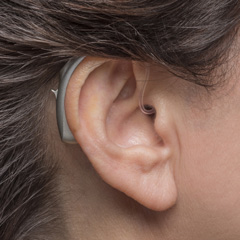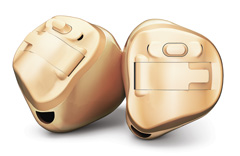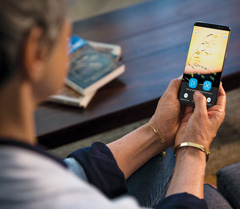 Hearing aid technology has improved drastically over the past couple of decades. Early devices relied on vacuum tubes and bulky batteries, but today’s instruments take advantage of digital signal processing, microchips and computerization. Keeping track of the latest technological features can be challenging, but we’ll cover a few of the more popular options here.
Hearing aid technology has improved drastically over the past couple of decades. Early devices relied on vacuum tubes and bulky batteries, but today’s instruments take advantage of digital signal processing, microchips and computerization. Keeping track of the latest technological features can be challenging, but we’ll cover a few of the more popular options here.
Some of the breakthroughs in hearing aid technology include the following:
- Gain processing, which reduces background and microphone noise for a clearer sound.
- Digital feedback reduction with built-in cancellation, which reduces or eliminates squelching and feedback.
- Digital noise reduction, which reduces background noises for better, more reliable speech recognition.
- Directional microphones, which provide better directionality by having one microphone focus on the sound source while the other decreases background noise.
- Automatic programming, which utilizes preset programs that automatically adapt to a range of different sound environments.
Digital Programming
For decades, hearing aids were strictly analog. But the digital revolution has taken over many areas formerly devoted to analog technology, and hearing aids are no exception. Digital programming works by converting sound waves into digital signals using digitized sound processing. A built-in computer chip determines whether the signal is speech or noise and converts it into a clear, amplified signal. Digital programming offers many benefits including improved speech quality, advanced programming options, a better fit, and a multitude of features that work to improve and enhance functionality of the hearing aids.
Bluetooth
This wireless communication platform is prevalent and used in a wide range of electronic devices, including computers, smartphones, and MP3 players, to exchange data. Bluetooth™ allows devices to communicate with one another. Bluetooth-enabled hearing aids let users stream signals from these and other electronic devices directly to their aids, improving their versatility and convenience. You can make phone calls, listen to music and watch television through your hearing aids, without disturbing other people around you.
Rechargeable Technology
One of the latest, and most welcome, breakthroughs in hearing aid technology is rechargeable batteries. Most of the major hearing aid manufacturers now offer rechargeable options or the ability to convert existing hearing aids into rechargeable ones, freeing users from the hassle of disposable batteries. Not only is this great for the environment; it saves you money in the long run. By utilizing lithium-ion batteries, you can get up to 24 hours of performance with a single charge, allowing you to wear your hearing aids all day long and not have to worry about having them run out of power during an especially inopportune moment. Many include disposable battery backups for an added measure of security.
Which Is Right for Me?
With all these advances in hearing aid technology, devices are better at providing clear sound than ever before. While the choices may seem overwhelming, working closely with your audiologist at ENT Specialties can help you figure out which technology and features are perfect for your needs.



